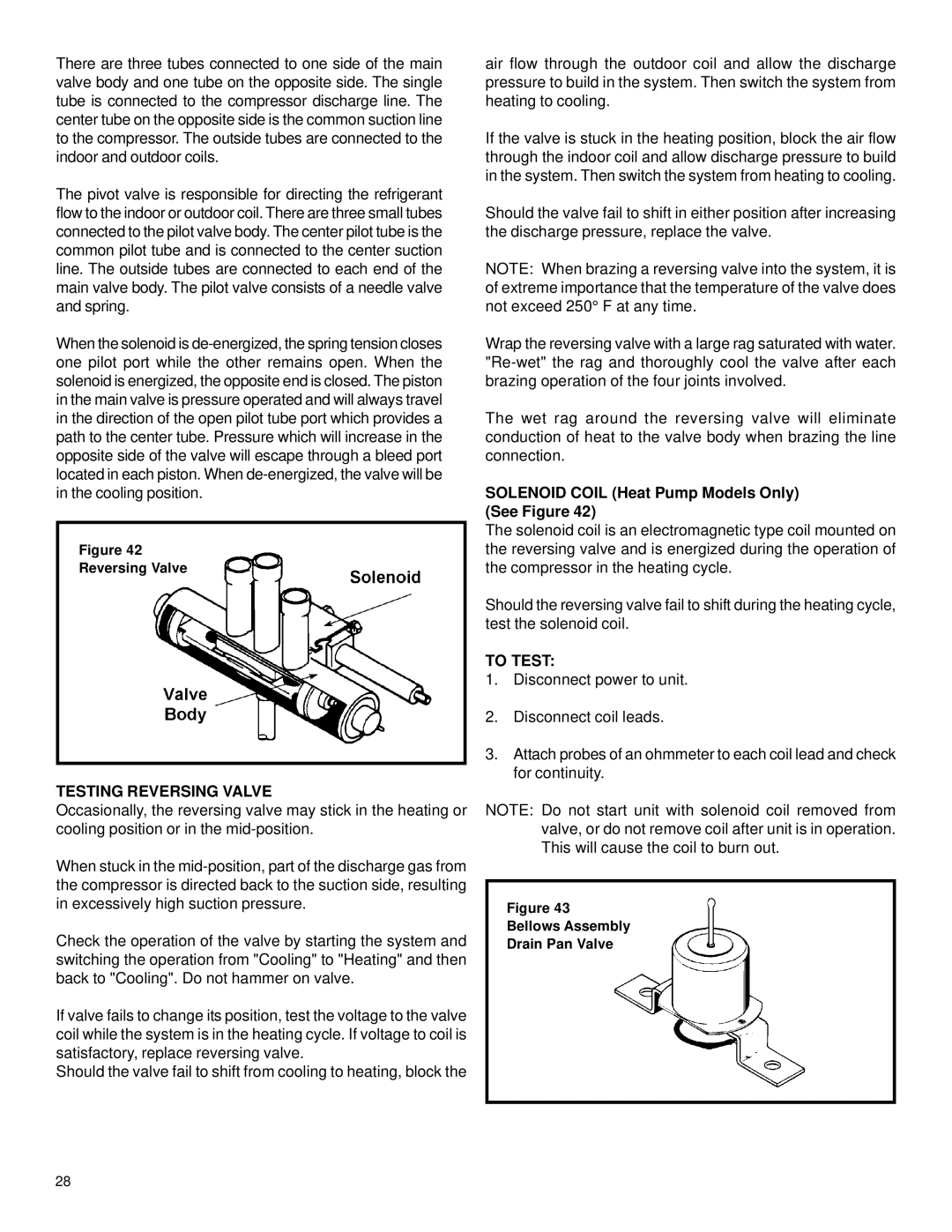
There are three tubes connected to one side of the main valve body and one tube on the opposite side. The single tube is connected to the compressor discharge line. The center tube on the opposite side is the common suction line to the compressor. The outside tubes are connected to the indoor and outdoor coils.
The pivot valve is responsible for directing the refrigerant flow to the indoor or outdoor coil. There are three small tubes connected to the pilot valve body. The center pilot tube is the common pilot tube and is connected to the center suction line. The outside tubes are connected to each end of the main valve body. The pilot valve consists of a needle valve and spring.
When the solenoid is
Figure 42
Reversing Valve
TESTING REVERSING VALVE
Occasionally, the reversing valve may stick in the heating or cooling position or in the
When stuck in the
Check the operation of the valve by starting the system and switching the operation from "Cooling" to "Heating" and then back to "Cooling". Do not hammer on valve.
If valve fails to change its position, test the voltage to the valve coil while the system is in the heating cycle. If voltage to coil is satisfactory, replace reversing valve.
Should the valve fail to shift from cooling to heating, block the
air flow through the outdoor coil and allow the discharge pressure to build in the system. Then switch the system from heating to cooling.
If the valve is stuck in the heating position, block the air flow through the indoor coil and allow discharge pressure to build in the system. Then switch the system from heating to cooling.
Should the valve fail to shift in either position after increasing the discharge pressure, replace the valve.
NOTE: When brazing a reversing valve into the system, it is of extreme importance that the temperature of the valve does not exceed 250° F at any time.
Wrap the reversing valve with a large rag saturated with water.
The wet rag around the reversing valve will eliminate conduction of heat to the valve body when brazing the line connection.
SOLENOID COIL (Heat Pump Models Only) (See Figure 42)
The solenoid coil is an electromagnetic type coil mounted on the reversing valve and is energized during the operation of the compressor in the heating cycle.
Should the reversing valve fail to shift during the heating cycle, test the solenoid coil.
TO TEST:
1.Disconnect power to unit.
2.Disconnect coil leads.
3.Attach probes of an ohmmeter to each coil lead and check for continuity.
NOTE: Do not start unit with solenoid coil removed from valve, or do not remove coil after unit is in operation. This will cause the coil to burn out.
Figure 43
Bellows Assembly
Drain Pan Valve
28
